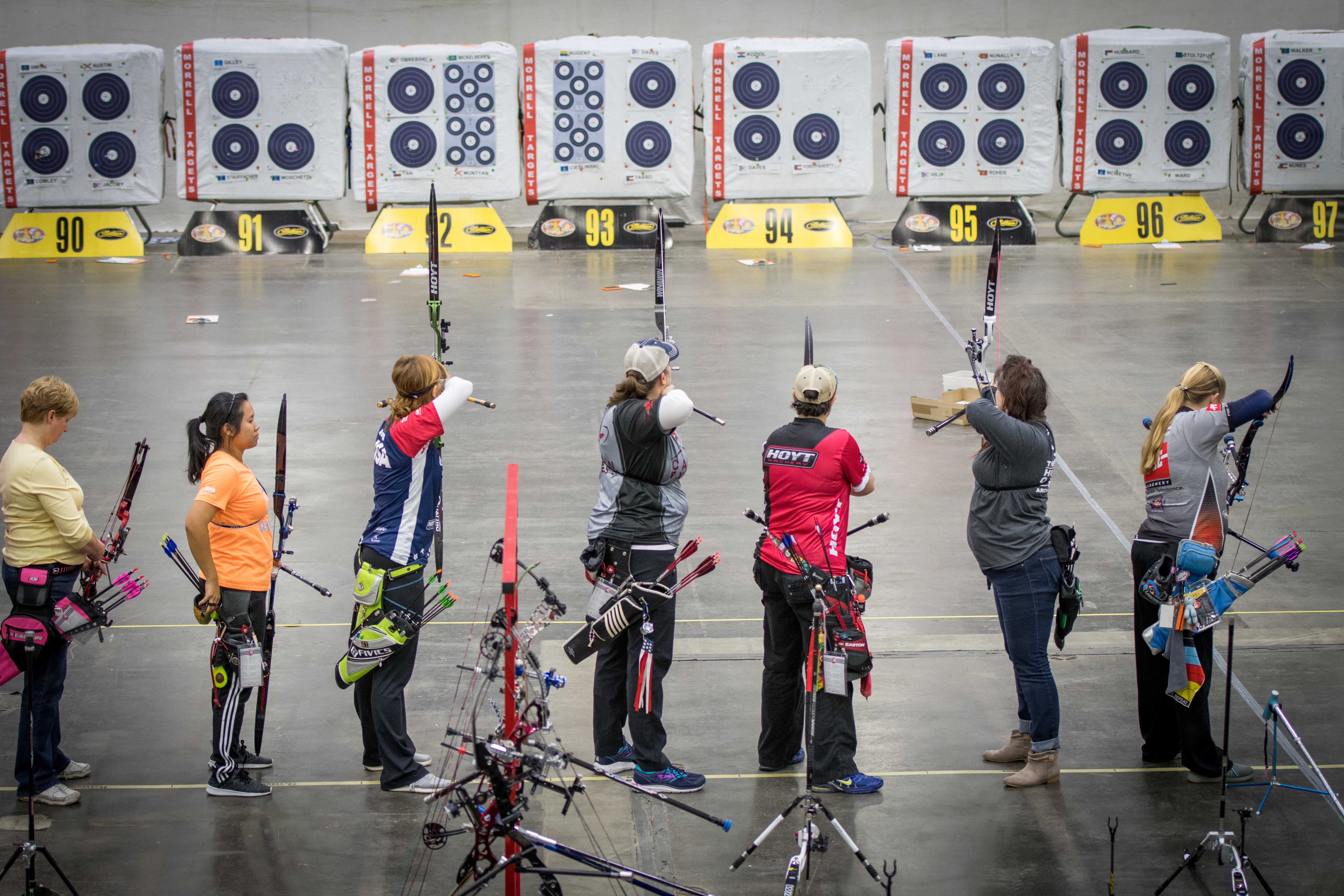NFAA News
Mar 11, 2019
NFAA Indoor Nationals: Scoring explained

The 39th NFAA Indoor Nationals, open to all current NFAA and USA Archery members, take place in Cincinnati, Ohio on March 15-17, 2019.
Archers shoot the NFAA 300 Indoor Round at a blue and white target face.
It's archer's choice between a single- or five-spot, but everyone shoots 60 arrows - 12 ends of five - for a maximum of 300 points per round. Most targets are set at 20 yards; cubs aged 11 and under shoot over 10 yards.
Each shooting line has two ends of practice before scoring begins; halfway through the round, archers switch their targets from top to bottom, or vice versa, on the target butt.
Everybody shoots for two days at the NFAA Indoor Nationals, one NFAA 300 round each day, and a clean score for the weekend is 600 points with 120Xs.
In the professional divisions, ties for first, second and third place are determined by shoot off immediately after the last shooting line.
The shoot-off starts with one practice end, followed by one end where only the X-ring sores five points - and then sudden-death scoring where only inside-out shafts in the X-ring score five until a winner is decided.
In the non-professional junior, adult and senior divisions, only ties for first place are determined by shoot off, using the same format as the professional divisions.
Single-spot target face
The standard single-spot target face measures 40 centimeters in diameter.
It has an eight-centimeter white five-ring - with a four-centimeter diameter X-ring in the very middle - and blue rings scoring four, three, two and one points.
Five-spot target face
Archers can choose to use a five-spot target face.
Each of the five spots has an eight-centimeter five-ring, colored white, and a four-centimeter diameter X-ring in the middle.
Each spot also has two blue rings, both four centimeters wide and both scoring four points.
Archers can shoot at the five spots in any order each end and shoot as many arrows into any spot as they want - as long as they don't shoot more than five arrows each end.
In both faces, Xs are always counted and used as tiebreakers. Arrows only need to touch the line to be given the higher value.
